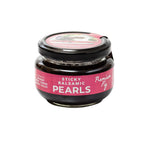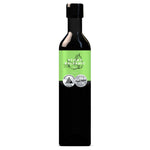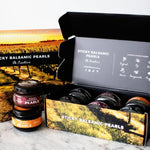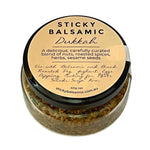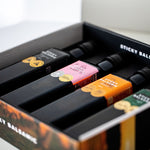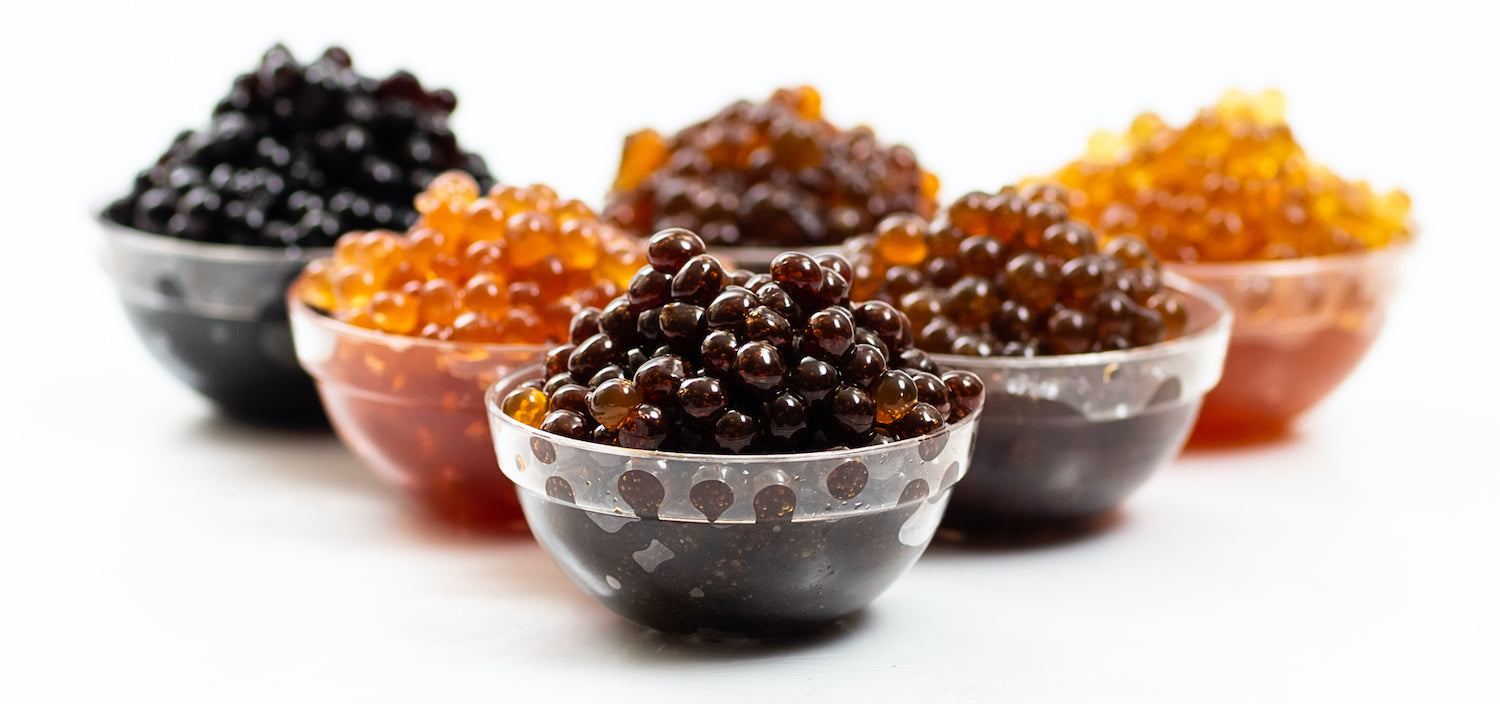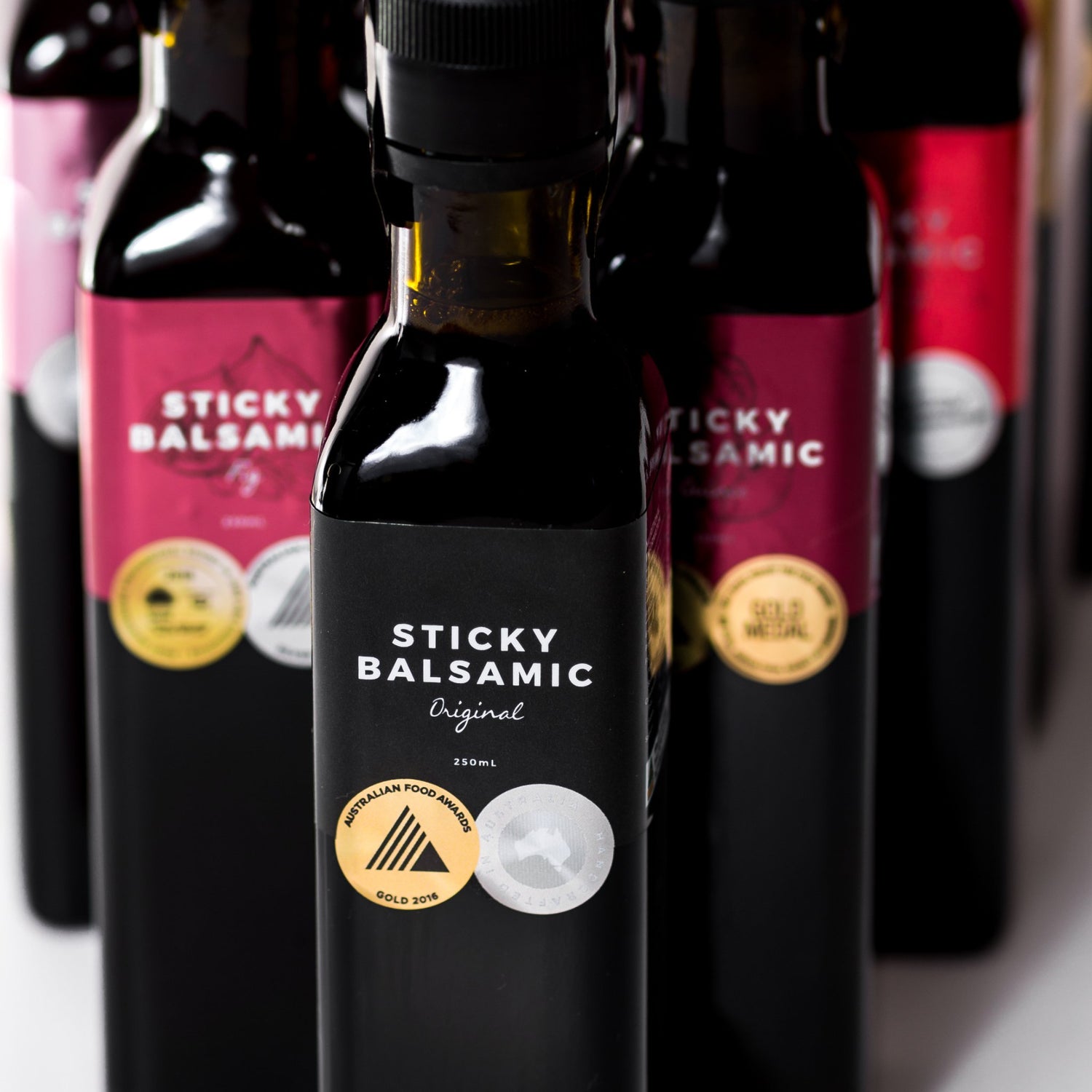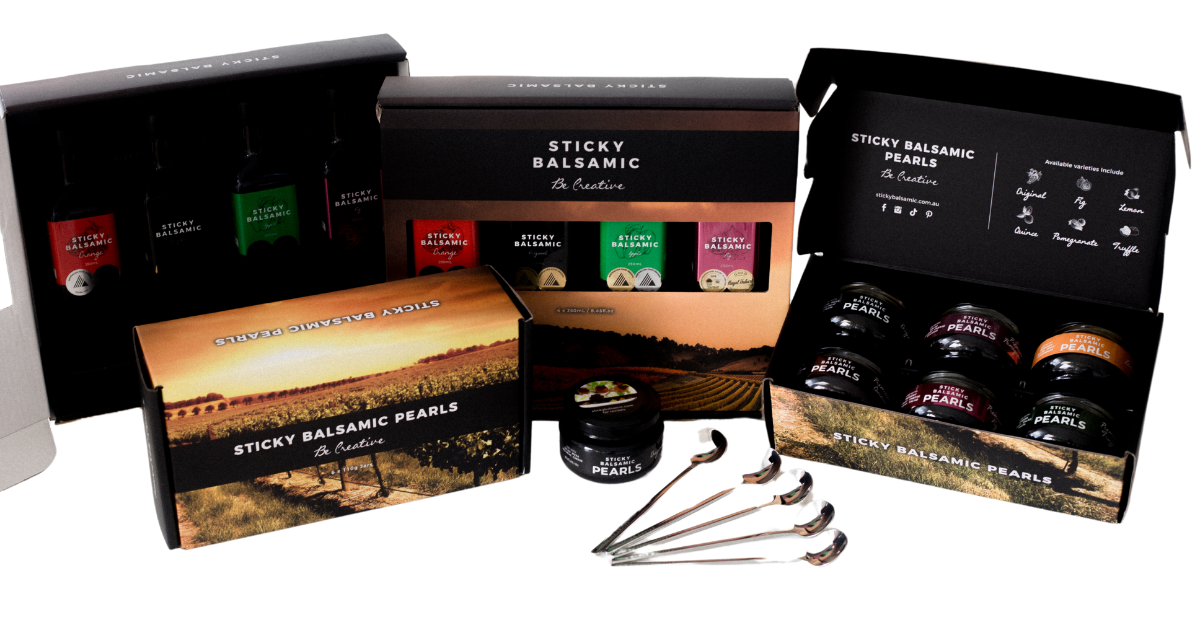There's something almost magical about watching balsamic vinegar transform in a hot pan. What starts as a tangy liquid becomes a rich, glossy caramel that can elevate everything from roasted vegetables to grilled meats. If you've ever wondered how to master this technique at home, you're in the right place.
What Happens When Balsamic Caramelizes?
When you apply heat to balsamic vinegar, the natural sugars concentrate and undergo a process called the Maillard reaction. The acidity mellows, the sweetness intensifies, and you're left with a syrupy, complex condiment that adds depth to any dish. It's not just about reducing liquid—it's about transforming flavour.
Quality matters here. A premium balsamic like Sticky Balsamic already has the right balance of sweetness and acidity, which means it caramelizes beautifully without needing added sugar.
Essential Techniques for Perfect Caramelization
The Pan Reduction Method
This is the most straightforward approach. Pour about 1 cup (240ml) of balsamic into a wide, shallow pan over medium heat. Let it simmer gently—don't rush it with high heat, or you'll end up with a burnt, bitter mess. Stir occasionally and watch as it reduces by about half. You'll know it's ready when it coats the back of a spoon and leaves a trail when you run your finger through it.
Time: 15-20 minutes
Best for: Drizzling over finished dishes, making glazes
Oven Caramelization
This hands-off method is perfect when you're already roasting something. Toss vegetables—think Brussels sprouts, carrots, or red onions—with a generous drizzle of Sticky Balsamic and a touch of olive oil. As they roast at 400°F (200°C), the Sticky Balsamic caramelizes directly on the vegetables, creating sticky, flavourful edges.
Time: 25-35 minutes
Best for: Roasted vegetables, sheet pan dinners
Direct Pan Caramelization
Add Sticky Balsamic directly to your pan when sautéing proteins or vegetables. After searing chicken, pork chops, or mushrooms, deglaze the pan with Sticky Balsamic and let it bubble and reduce. The fond (those delicious browned bits) incorporates into the caramel, creating an instant pan sauce.
Time: 3-5 minutes
Best for: Quick pan sauces, deglazing
Pro Tips for Caramelizing Success
Choose the Right Pan
A stainless steel or light-colored pan lets you monitor the color change. Dark non-stick pans make it harder to judge when your balsamic is perfectly caramelized versus heading toward burnt territory.
Control Your Heat
Medium heat is your friend. Too high and you'll burn the sugars before the liquid reduces properly. Too low and you'll be standing there forever. Find that sweet spot where gentle bubbles consistently break the surface.
Don't Walk Away
Caramelization can go from perfect to ruined in seconds. Stay nearby, stir occasionally, and keep an eye on the consistency. Once it starts thickening, things move quickly.
Remember It Thickens as It Cools
Your balsamic reduction will continue to thicken off the heat. If you're aiming for a drizzle-able glaze, take it off when it's slightly thinner than your target consistency. If you accidentally over-reduce it, just whisk in a splash of water or fresh balsamic to loosen it up.
Flavour Variations to Try
Once you've mastered basic caramelization, experiment with these additions:
-
Honey & Thyme: Add a tablespoon of honey and fresh thyme sprigs while reducing for a herbaceous sweetness
-
Garlic & Rosemary: Infuse with crushed garlic and rosemary, then strain before the final reduction
-
Citrus Zest: Stir in lemon or orange zest at the end for brightness
-
Black Pepper & Bay: Add cracked pepper and a bay leaf for savory depth
Or skip the DIY and try Sticky Balsamic's flavoured varieties—Premium Fig, Premium Pomegranate, Lemon, or Premium Truffle—each brings its own character to caramelization without extra work.
What to Do with Caramelized Balsamic
The possibilities are genuinely endless, but here are some favourites:
-
Drizzle over fresh mozzarella and heirloom tomatoes
-
Glaze roasted chicken thighs or pork tenderloin in the last 5 minutes of cooking
-
Toss with roasted Brussels sprouts, butternut squash, or beets
-
Finish grilled steak or lamb chops
-
Drizzle over vanilla ice cream or fresh strawberries
-
Add to caramelized onions for burgers or flatbreads
-
Mix into vinaigrettes for extra depth
Common Mistakes to Avoid
Using Low-Quality Balsamic
Cheap balsamic often contains added coloring and thickeners. When you try to caramelize it, you won't get that beautiful glossy reduction—you'll get a weird, gummy mess. Start with quality, and you'll end with quality.
Adding Sugar
Good balsamic doesn't need added sugar. The natural grape sugars are sufficient. Adding more just makes it cloying and masks the complex flavour you're trying to highlight.
Reducing Too Much
If you reduce balsamic to the point where it's hard and candy-like when cooled, you've gone too far. Aim for a consistency similar to maple syrup or slightly thicker.
Not Tasting as You Go
Taste your reduction as it cooks (carefully—it's hot!). You want to preserve some of that characteristic tang while concentrating the sweetness. If it tastes flat or overly sweet, you may have reduced it too much.
Storage & Shelf Life
Store your caramelized balsamic in a clean jar or squeeze bottle in the refrigerator. It'll keep for several weeks, though it may thicken further. Just gently warm it or add a splash of fresh balsamic to return it to drizzling consistency.
The Shortcut: Sticky Balsamic Pearls
Want the concentrated, sweet-tart intensity of caramelized balsamic without the stovetop time? Sticky Balsamic Pearls deliver that same punch of flavour in a tiny, elegant sphere. Each 7mm pearl bursts with concentrated balsamic that's perfect for finishing dishes where you want visual impact and precise flavour placement. Try them on oysters, caprese salad, or even desserts.
Final Thoughts
Caramelizing balsamic isn't complicated, but it does require attention and quality ingredients. Master these techniques, and you'll have a versatile skill that transforms simple ingredients into restaurant-worthy dishes. Whether you're glazing vegetables, finishing proteins, or creating a show-stopping dessert drizzle, caramelized balsamic brings depth, sweetness, and sophistication to your cooking.
Start with a bottle of Sticky Balsamic—Original is perfect for learning, but don't be afraid to experiment with Premium Fig for pork dishes, Premium Pomegranate for lamb, or Lemon for seafood. Each variety caramelizes beautifully and brings its own personality to the table.
Now get in the kitchen and start caramelizing. Your taste buds will thank you.

